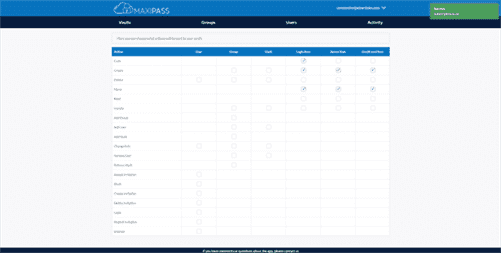What Is the Software Development Life Cycle? SDLC Explained
A key methodology in the creation of software and applications is the systems development life cycle (SDLC). The systems development life cycle is a term used in systems engineering, information systems, and software engineering to describe a process for planning, creating, testing, and deploying an information system. There are many phases involved in the systems development life cycle.
Advances in design theory and methods have greatly promoted international recognition of China’s bridge technology [9–11]. During the Analysis stage, the focus is on gathering and understanding the requirements of the system. This includes conducting interviews, studying existing processes, and identifying stakeholders’ needs.
2: Systems Development Life Cycle (SDLC) Model
While there are some drawbacks, SDLC has proven to be one of the most effective ways for successfully launching software products. Mostly used for creating and delivering a wide range of ideas, this model perfectly fits the clients who don’t have a clear idea or vision of what their final product should look like. While a Waterfall model allows for a high degree of structure and clarity, it can be somewhat rigid. Prototyping tools, which now offer extensive automation and AI features, significantly streamline this stage. They are used for the fast creation of multiple early-stage working prototypes, which can then be evaluated.

SDLC provides a number of advantages to development teams that implement it correctly. T’s important that the software overall ends up meeting the quality standards that were previously defined in the SRS document. During the testing stage, developers will go over their software with a fine-tooth comb, noting any bugs or defects that need to be tracked, fixed, and later retested. Furthermore, developers will often create a software requirement specification or SRS document.
Life Cycle Design
If, based on the findings of the feasibility study, the project steering committee determines to continue with the project, a project scope agreement is prepared. Commercial software developers and consultants rank this phase as the most critical factor in the selection of a system, even more important than the system itself. Time spent in developing a sound plan that encompasses all the checklist steps will reduce the amount of time spent in reworking areas not reviewed during the planning phase. Finally, the planning process clearly defines the outline of system development. The project manager will set deadlines and time frames for each phase of the software development life cycle, ensuring the product is presented to the market in time.
An excellent text with healthcare examples is Information Technology Project Management, by K. Schwalbe (Schwalbe, 2016) (see Chapter 15, “Healthcare Project Management”). Project managers in charge of SDLC need the right tools to help manage the entire process, provide visibility to key stakeholders, and create a central repository for documentation created during each phase. One such tool systems design life cycle is Smartsheet, a work management and automation platform that enables enterprises and teams to work better. Each company will have their own defined best practices for the various stages of development. For example, testing may involve a defined number of end users and use case scenarios in order to be deemed successful, and maintenance may include quarterly, mandatory system upgrades.
Renewable Energy Grid Integration: Technical & Environmental Systems Analyses
One of the most useful ideas he puts forth that is widely used in mathematics is to find an analogous problem and solve it. This is more useful in the extremely abstract world of mathematics where assumptions always hold true and objects are perfect, but the technique can be used to get a good approximation of a real world problem. In the world of engineering, this may be sufficient to get the job done.

The testing must be repeated, if necessary, until the risk of errors and bugs has reached an acceptable level. TRIZ, which is a Russian acronym for Theory of Inventive Problem Solving, is a problem solving method based on the study of patterns in problems and solutions. The developers of this method have analyzed over three million inventions with the intent of predicting where breakthroughs will come from (Jugulum & Samuel, 2008). The idea is that problems and solutions are repeated across a wide variety of applications, so by generalizing the problem, one can find a proven solution. Once the abstracted problem has been solved, the solution must then be adapted to the specific situation.
System Development Life Cycle Phases (SDLC)
And for the moment, there’s no other formal options that have been presented. And will climate change impose some sort of new limit that means you’ve got to shift away from building your way out of those problems and instead say, well, maybe there’s some areas where it doesn’t make sense to keep on building. And that’s why Arizona is really at the forefront of dealing with this groundwater crisis, and they’re trying to engineer their way out of it. And in a sense, that’s the history of humanity inhabiting the Earth and extreme areas in the Earth and building their way around those limits and those constraints.
- It transforms user needs and functional specifications into a detailed technical plan that guides the development team.
- He’s not as much taking into account the environmental concerns, both in Mexico and Arizona.
- The best students may look at generalized problem solving methods that have been studied and improved upon for decades, and find a way to apply it to their project.
- Even when an enterprise utilizes the same methods, different project tools and techniques can differ dramatically.
- All phases of the systems development life cycle need to occur for the success of the app and satisfaction of its users.
During this step, current priorities that would be affected and how they should be handled are considered. A feasibility study determines whether creating a new or improved system is appropriate. This helps to estimate costs, benefits, resource requirements, and specific user needs.
Water levels in aquifers are falling nationwide. Could taking salt out of ocean water be the answer?
Once the themes have been identified then there are predetermined tasks and techniques to finish the project as defined by the approved methodology of the organization. The second theme includes ways to determine the data necessary to produce the logical requirements specified by the organization. The most common data model used is the entity relationship diagram.
The scope document outlines the boundaries of the project, establishes responsibilities for each team members, and sets up procedures as to how completed work will be verified and approved (Schwalbe, 2016). The project https://www.globalcloudteam.com/ definition includes a description of how the system will be evaluated. Establishing the evaluation criteria early in the process supports the successful management philosophy of beginning with the end in mind.
1 History and Definitions of Industrial Ecology
It’s mostly used for smaller projects and experimental life cycles designed to inform other projects in the same company. But in theory, it illuminates the shortcomings of the main waterfall model by preventing larger bugs from spiraling out of control. Projects pass through four main phases again and again in a metaphorically spiral motion. The information system will be integrated into its environment and eventually installed.

Leave a Reply
Want to join the discussion?Feel free to contribute!